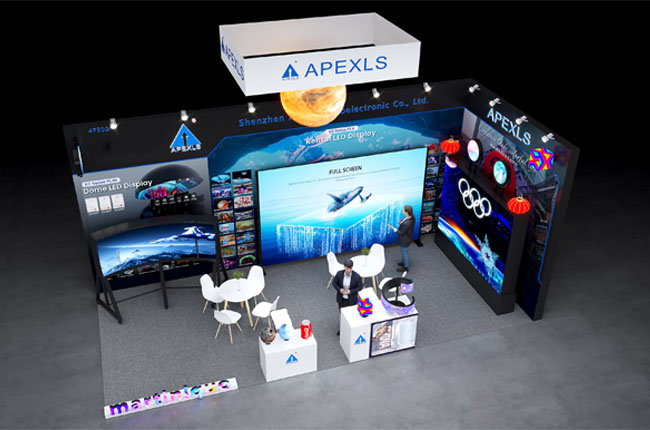Outdoor naked-eye 3D displays have become highly attractive visual focal points in urban landscapes, thanks to their ability to deliver stunning stereoscopic effects without requiring viewers to wear auxiliary equipment. Compared to indoor devices, they have unique characteristics in terms of technical principles, application scenarios, price structures, and selection criteria. Below, Apexls provides an in-depth analysis:pass spherical led display screen It can be seen from the present situation that the market prospect is relatively broad, which is conducive to our reference and investment. https://www.apexls-ksz.com/
1. Principles of Outdoor Naked-Eye 3D Displays
While the core principle of outdoor naked-eye 3D displays is based on human binocular parallax, technical upgrades have been made to adapt to complex outdoor environments.
The basic principle remains the same: using parallax barrier or lenticular lens technology to allow the left and right eyes to receive different images, which the brain then processes to form stereoscopic vision. However, outdoor displays face the challenge of strong light interference, so high-contrast panels have become standard. These panels effectively enhance image clarity under sunlight, ensuring that the 3D effect is not diminished by ambient light.
Additionally, outdoor displays are typically equipped with dynamic backlight adjustment systems, which automatically adjust brightness based on real-time light intensity. This prevents image whitening under strong light and reduces brightness at night to save energy. To expand the viewing range, most outdoor naked-eye 3D displays adopt a wide-angle optical design; some high-end models offer a viewing angle of over 160 degrees, allowing pedestrians in different positions to experience clear 3D effects.
2. Application Scenarios of Outdoor Naked-Eye 3D Displays
Outdoor naked-eye 3D displays shine in various outdoor scenarios due to their powerful visual impact.
Outdoor plazas of commercial complexes are a common application. On large screens, the naked-eye 3D effect makes advertised products appear to break through the screen〞for example, a beverage bottle ※pouring§ liquid or a car ※driving out§ of the screen. This easily attracts passers-by to stop and watch, bringing high foot traffic to shopping malls.
Transportation hubs such as railway stations and airports also widely use naked-eye 3D technology. Here, displays not only broadcast eye-catching commercial ads but also present traffic information in 3D, allowing travelers to obtain guidance more intuitively and improving the efficiency of information transmission.
Outdoor naked-eye 3D displays near urban landmarks serve as windows for showcasing urban culture. By presenting a city*s historical features and cultural characteristics through stereoscopic images, they enrich urban landscapes and enhance citizens* cultural identity.
Moreover, in outdoor exhibition areas of large-scale expositions and at the entrances of theme parks, outdoor naked-eye 3D displays create a unique atmosphere and deliver a strong visual shock.
The naked-eye 3D large screen of the pavilion in Butengah, Malaysia
Case in point: The 1,250-square-meter outdoor naked-eye 3D display at Pavilion Kuala Lumpur in Bukit Bintang, Malaysia, featuring Huawei Mate XT advertisements.
3. Price Range of Outdoor Naked-Eye 3D Displays
The price of outdoor naked-eye 3D displays varies widely due to multiple influencing factors.
In terms of size:
Small-sized displays (50每300 square meters) typically cost 300,000每2.5 million yuan. These are suitable for installation on the exteriors of small shops or community activity centers.
Medium-sized models (300每600 square meters) generally range from 2每4.5 million yuan and are often used in outdoor plazas of medium-sized shopping malls or regional transportation hubs.
Large-sized displays (over 600 square meters) usually exceed 4 million yuan, with some reaching tens of millions. They are often installed in core urban business districts or at large transportation hubs, becoming landmark visual installations due to their massive size and stunning effects.
Protection level significantly affects pricing: products with an IP65 or higher rating (capable of resisting rain and dust) cost 20%每30% more than ordinary outdoor screens. Well-known brands, with mature technology and stable quality, are also priced about 30% higher than niche brands.